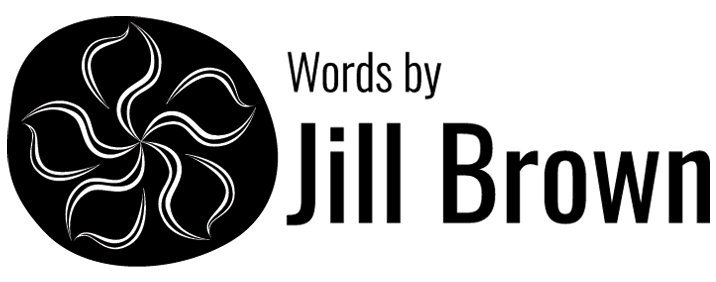Green Thoughts
The whole world was seeking succour in the park
Annihilating all that’s made
To a green thought in a green shade
‘The Garden’, Andrew Marvell, 1681
i
In mid-March 2020, my ballet classes were cancelled. The following week the gym in the city closed, as did the one in my apartment building, the one I wouldn’t use before because it wasn’t well-enough equipped. At week’s end, I decided ⎯for sanity, physical expression, escape, agency⎯I’d have to start running in the large city park two streets away.
ii
The whole world, it seemed, was seeking succour in the park. Every age and stage of humanity was there, every kind of dog and lots of runners. There was every shade of green in the late evening sunshine of late summer in Melbourne. It was quiet, but vibrantly alive.
The days passed and I discovered the park’s variegated moods. There was less sun each week, but the air remained soft against my skin as evening fell. Once, the unseen sunset behind the high-rises blazed a deep rosy pink into the heavens that bounced off the windows of the apartment buildings. In the twilight, the slender upper branches of the trees looked smudged against the sky, like a Corot. Overcast skies muted the colours and deepened the quiet.
There was height and space, like a cathedral. The series of ovals and lawns created an expansive vertical plane of bright green in all directions. The trees reaching skyward articulated a horizontal plane. They extended in graceful colonnades along the avenues, regular and symmetrical. They had been planted in a design to please the human eye. Hidden beneath their roots, other life forms were breaking down insects, birds and plants and building new trees, more grass. Nature can be shaped by gardeners, but it is ungovernable and imperturbable. The sacred peace I felt was a human peace, not nature’s. The park was busy with the business of death and renewal.
iii
I hadn’t run for 10 years. From the first, I decided there was no goal, just movement. I certainly didn’t want to purchase any new equipment to track my efforts; in the park, I would rely on my own body.
So, to run in timed intervals, I counted seconds in my head: one-Mississippi equals one second. I’d find a place to start, run for sixty seconds counting in a series of 10 second phrases. Then I’d walk to another inviting grassy expanse and go again until I had completed ten repeats, ten minutes of running. And then I’d walk home around the park’s perimeter gazing at the trees and sky.
To run was to count, and to notice counting. I kept losing my place. Short-term memory is a fragile resource, and I’d be discombobulated by the slightest disturbance. Had I run for more than one minute, or less? I was playing a game of mental gymnastics and I constantly refined my system: ‘One Mississippi two (beat) was easier than ‘One Mississippi, two Mississippi’, for example. As I grew more confident I added another phrase, so I was running for 90 second repeats. I found if I ran forward for 30 seconds, back for 30 seconds and forward again for 30 seconds, I could better keep my place in my head than if I ran in a circle around the oval.
Each run was an intense focus on the body. The physical sensations of effort and the concentration on counting filled my being and allowed for no other thoughts to intrude. I often arrived at the park disgruntled from the day at my desk, but I completed each run with a transformed brain state. It was a kind of resetting. I’d be at once exhilarated and calm while walking home.
iv
One late afternoon as I glanced around at the other runners and the toddlers, seniors, lovers and dogs on the lawn, it struck me that the park and its inhabitants are like the workings of consciousness. All those distant figures running, jumping, darting, strolling seemed like thoughts, rising up unbidden, fleeting and restless, in the wide, open field of awareness.
The park is a precondition for human activity, but it is oblivious to that activity⎯ as oblivious as a virus. Consciousness is the precondition for knowing the world. That which recognises fear is not itself fearful. That which knows joy is not joyful. But without consciousness, there is no world of experience.
That sense of being a sovereign self, a thinker of thoughts, is as much an appearance in consciousness as the sounds of the birds or the sight of the trees. I am coterminous with what I perceive; I don’t survey it from a command centre somewhere behind my eyes. I don’t report back to myself on the world: I produce the world. Arriving at this realisation is what the neuroscientist and philosopher Sam Harris describes as ‘clear seeing’. For me, it’s an elusive awareness. More often than not, I’m caught up in a jumbled tangle of thinking.
The onrush of colour and light that would greet me whenever I entered the park was a freshly renewed joy. It was a return to the Garden, a time free of suffering. It called to mind TS Eliot’s lines from ‘Little Gidding’: ‘to arrive at where we started/And know the place for the first time.’
In those brief, interstitial moments before the running and counting, I could rest my mind, open as an oval with everything in its place, appearing in a single continuum. Sam Harris speaks of the stream of consciousness and the field of consciousness. For me, it’s a park.
Published in Our Inside Voice: Reflections on COVID-19, edited by Louise Martin-Chew et al, AndAlso Books/Paradigm Print Media, July 2020




